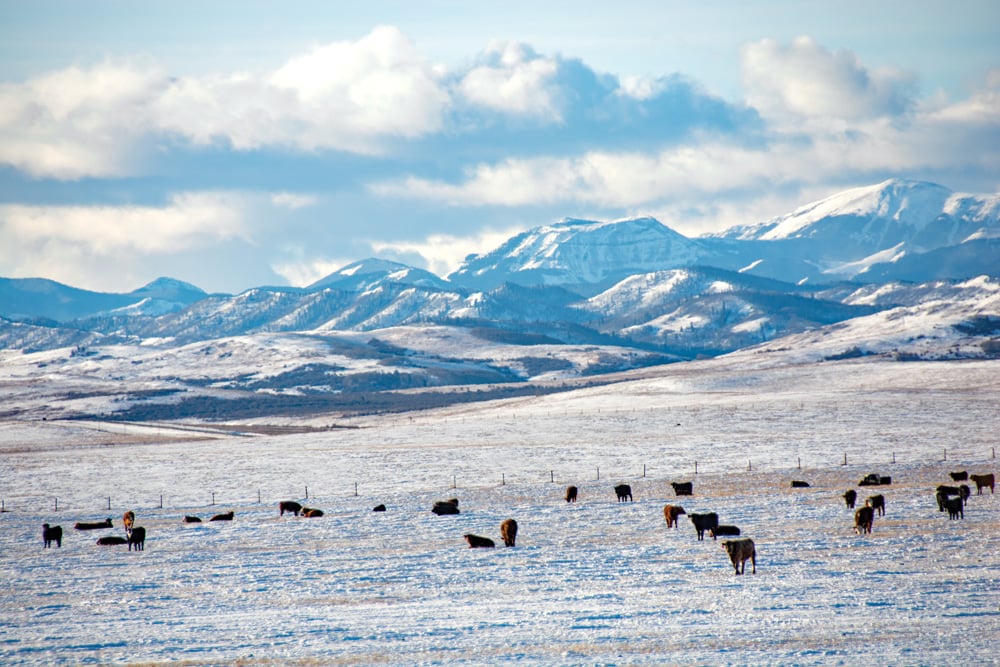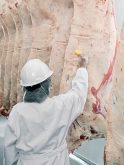Matt called early on January 1, 1975, worried about a downer cow on a field of swathed barley damaged by hail in July of the previous summer. Matt let the crop volunteer through the growing season with plans to swath it near the end of harvest as winter graze for his herd of 200 Hereford-cross cows. He had started feeding good-quality hay after an early snow in October. At the time, he also offered a free choice mineral mix containing 2:1 Ca:P and salt. Around the middle of December, he turned the cow herd onto the barley field, but failed to move the mineral station closer to where the cows grazed.
Read Also

Body condition, nutrition and vaccination for brood cows
One of the remarkable events of the past century related to ranching has been the genetic evolution of brood cows….
Matt described the cow as a 1,200-pound cow due to calve in March. All cows where in excellent condition and everything had seemed normal when he checked the herd before leaving for a New Year’s Eve soiree in Montmartre.
“Sure would like you to come out, Doc. She’s one of my best cows. She calves every year like clockwork and has produced a 650-pound calf every year for six years. I covered her with a tarp to help keep her warm.”
The cow laid in sternal recumbency with her head tucked into a flank. She appeared very depressed with a temperature hovering at subnormal levels. All reflexes were slow. The cow seemed to have laid down and simply couldn’t get up. There were no signs of struggle. She looked like a typical case of milk fever I had seen hundreds of times in dairy cows following parturition. I administered 500 cc of a calcium borogluconate containing phosphorus and magnesium salts intravenously while monitoring the heart, followed by 500 ml of 23 per cent calcium borogluconate subcutaneously. The cow did not respond immediately to treatment like many milk fevers do. Matt suggested we go up to the house for coffee, toast the New Year and have bacon and eggs, and wait. About half way through breakfast, Matt’s son rushed into the kitchen, excited about the tarp that moved across the field and now stood in front of the barn. Matt’s cow had responded to the calcium and magnesium and would go on to fully recover.
Hypocalcemia (low blood calcium) with paralysis unrelated to calving occurs occasionally in cattle. Subnormal blood levels of calcium are caused by disturbances in calcium metabolism in the gut rather than sudden changes in calcium levels associated with lactation following calving. Diseases that retard digestion of food and intestinal track diseases cause hypocalcemia. Low blood levels of calcium can also be associated with mineral deprivation, which probably initiated the paralysis in Matt’s case.
Hypocalcemia in beef cattle can be associated with age, a sudden shift in weather conditions, vitamin D deficiency and removal of calcium-fortified mineral. Older cattle seem less adaptable to changes in calcium drain. It may be related to senescent hormonal control of calcium. Forced activity has also been incriminated as a precipitating cause of hypocalcemia. While fluctuation in magnesium levels can occur with fluctuations in calcium levels, early hypocalcemia and hypomagnesemia (low blood magnesium) can be difficult to differentiate.
E. Janzen, in a Clinical Note published in the Canadian Veterinary Journal, 1976, suggests that including good legume hay in the roughage portion of the ration can minimize the disease. If mature cereal hay or crop aftermath constitutes a significant part of the roughage portion of the ration, adequate mineral and vitamin supplementation should be offered in grain or by careful monitoring of free choice mineral consumption.
Field observation of non-parturient paresis (hypocalcemia and paralysis not associated with calving) can affect single animals or up to 20 per cent of a cow herd. Response to treatment is generally good.
Dr. Ron Clarke is a veterinarian who consults on animal health and disease issues and writes for agricultural and veterinary audiences.

















